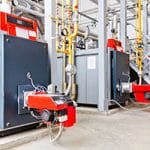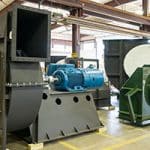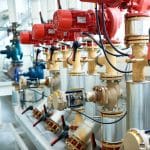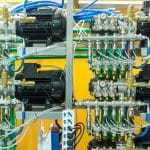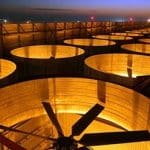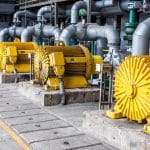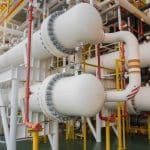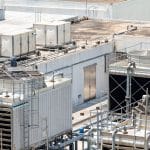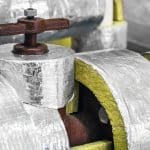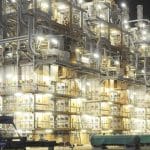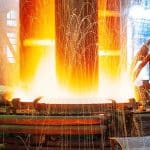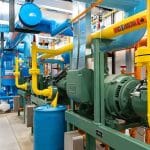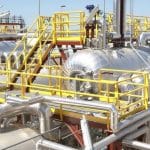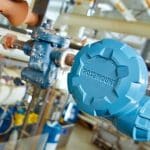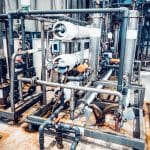The 3 kEys
- Integrate HVAC operations with production schedules to align heating and cooling loads with peak manufacturing activities.
- Switch between summer and winter modes to efficiently add heat in winter and remove heat in summer in optimal volumes, with little or no waste.
- Regular inspections, cleaning, and timely repairs help ensure that components such as filters, coils, and motors operate at peak efficiency.
When we think about Heating, Ventilation, and Air Conditioning (HVAC) systems, we often focus on their role in maintaining human comfort. However, in manufacturing facilities, HVAC systems are vital not just for comfort but also for ensuring the smooth operation of process equipment. Yet, with these systems accounting for a substantial portion of energy expenditures—often 10-15% of a facility’s annual energy use—there’s a clear incentive to prioritize efficiency improvements that will translate into significant cost savings and operational enhancements.
Let’s dive deeper into how HVAC systems impact energy consumption, the challenges they pose, and the strategies Facilities Managers can adopt to optimize them.
Quick Opportunities: Scheduling
HVAC design doesn’t have to work in isolation. By linking process control and building HVAC systems, a facility can adjust its energy use based on real-time production needs.
When the production line is running at peak capacity, HVAC systems are primed to ensure optimal environmental conditions, while during downtime, the system can reduce heating or cooling output. This not only maximizes energy utilization but also helps avoid the costly spikes in energy use that typically occur when HVAC systems run at full capacity unnecessarily. For more detailed insights, read this article from Food Engineering: foodengineeringmag.com.
Quick Opportunities: Seasonality
Heat removal in summer – During the warmer months, HVAC systems remove heat from indoor spaces while controlling humidity. Air conditioning systems pass warm air over evaporator coils, cooling it and removing moisture. Effective dehumidification prevents mold growth and ensures a comfortable environment.
Heat addition in winter – In colder months, HVAC systems maintain indoor temperatures using electric resistance heating, gas furnaces, or heat pumps. These systems also regulate humidity, ensuring that air doesn’t become excessively dry and uncomfortable.
Seasonal reevaluation – Switching between summer and winter modes doesn’t need to be a one-time adjustment. Systems should dynamically evaluate heat balance every 15-30 minutes, accounting for outdoor conditions. This real-time approach enables facilities to use free cooling or heating effectively, further reducing energy costs.
Preventive Maintenance
Preventive maintenance on HVAC systems is critical for maintaining optimal efficiency and performance. Regular inspections, cleaning, and timely repairs help ensure that components such as filters, coils, and motors operate at peak efficiency, leading to measurable energy savings that can range from 10% to 40% depending on the system and maintenance rigor.
In addition to reducing energy consumption, a well-executed preventive maintenance program minimizes system downtime, extends equipment life, and improves indoor air quality by preventing dust and contaminant buildup. This not only results in lower operating costs over the system’s lifespan but also enhances occupant comfort and productivity.
Size Matters, and Your HVAC System is Probably Too Big
One of the most common issues in HVAC design is oversizing. Many systems are built to handle peak conditions, such as extreme temperatures or humidity, that occur infrequently. While this ‘better safe than sorry’ approach may seem practical, it often leads to inefficiencies. This was perhaps OK back when energy was cheap, but it’s not now, and sound business management practices can nudge a Plant Manager to tighten up the facility’s efficiency standards, and put them into practice.
Accurate load calculations ensure that HVAC systems are tailored to specific building needs, considering factors like insulation, building orientation, and climate. Manual N is the industry-standard method for calculating the heating and cooling loads in commercial and industrial buildings. Developed and published by the Air Conditioning Contractors of America (ACCA), it considers a variety of factors—such as the size of the facility, insulation levels, window orientation and area, air leakage, local climate, occupancy, and equipment efficiency—to determine the precise amount of heating or cooling required. This detailed load calculation is important for properly sizing HVAC equipment, as oversized units can lead to inefficiencies, short cycling, and higher energy costs.
VAVs and VFDs
Adding a VFD to an HVAC system provides enhanced energy efficiency by allowing the motor to run at variable speeds, matching its output to the actual demand rather than operating at full speed continuously. This dynamic control not only reduces energy consumption and operating costs but also minimizes mechanical wear and tear due to softer start-ups and stops. Additionally, VFDs can improve indoor comfort by maintaining more consistent airflow and temperature levels, while also contributing to quieter operation and extended equipment lifespan through reduced electrical stress and improved load management.
Transitioning to energy-efficient HVAC technologies like variable air volume (VAV) systems or high-efficiency chillers can drastically cut energy usage.
Are VAVs and VFDs the same thing? Nope, they are not the same thing. A VAV, or Variable Air Volume system, controls the amount of conditioned air delivered to different zones to maintain desired temperatures. In contrast, a VFD, or Variable Frequency Drive, is an electronic device that adjusts a motor’s speed by changing the frequency of the power supplied to it. Often, a VFD is used to control the fan motor in a VAV system, but they serve different functions.
Variable-capacity systems with multi-stage heat pumps or variable-speed compressors adjust output based on demand, avoiding the pitfalls of oversizing.
ABB’s Detailed Description on Using VFDs for HVAC Systems – This white paper covers how variable speed control of HVAC components like fans and pumps can lead to energy savings of up to 30%, while also providing smoother operation and reduced mechanical wear.
EnergySoft put out a nice paper some years back on VAVs, comparing the results of various VAV systems. It’s a bit dated now, but there are some nuggets in there worth building into your management game: Comparing Energy Savings of Different VAV Systems
Waste Heat Recovery
Harnessing waste heat from HVAC systems offers considerable energy savings, by capturing and redirecting heat that would otherwise be wasted. This captured heat can be utilized for space heating, water heating, or even absorbed into nearby industrial processes, minimizing the need for additional energy inputs. Various case studies have illustrated how efficient heat recovery can lead to savings of up to 30% in annual energy expenditures.
See the U.S. Department of Energy’s page on waste heat recovery, as it’s chock full of all kinds of ideas, with measurable results. You can find it here: Waste Heat Recovery Publications and Resources.




